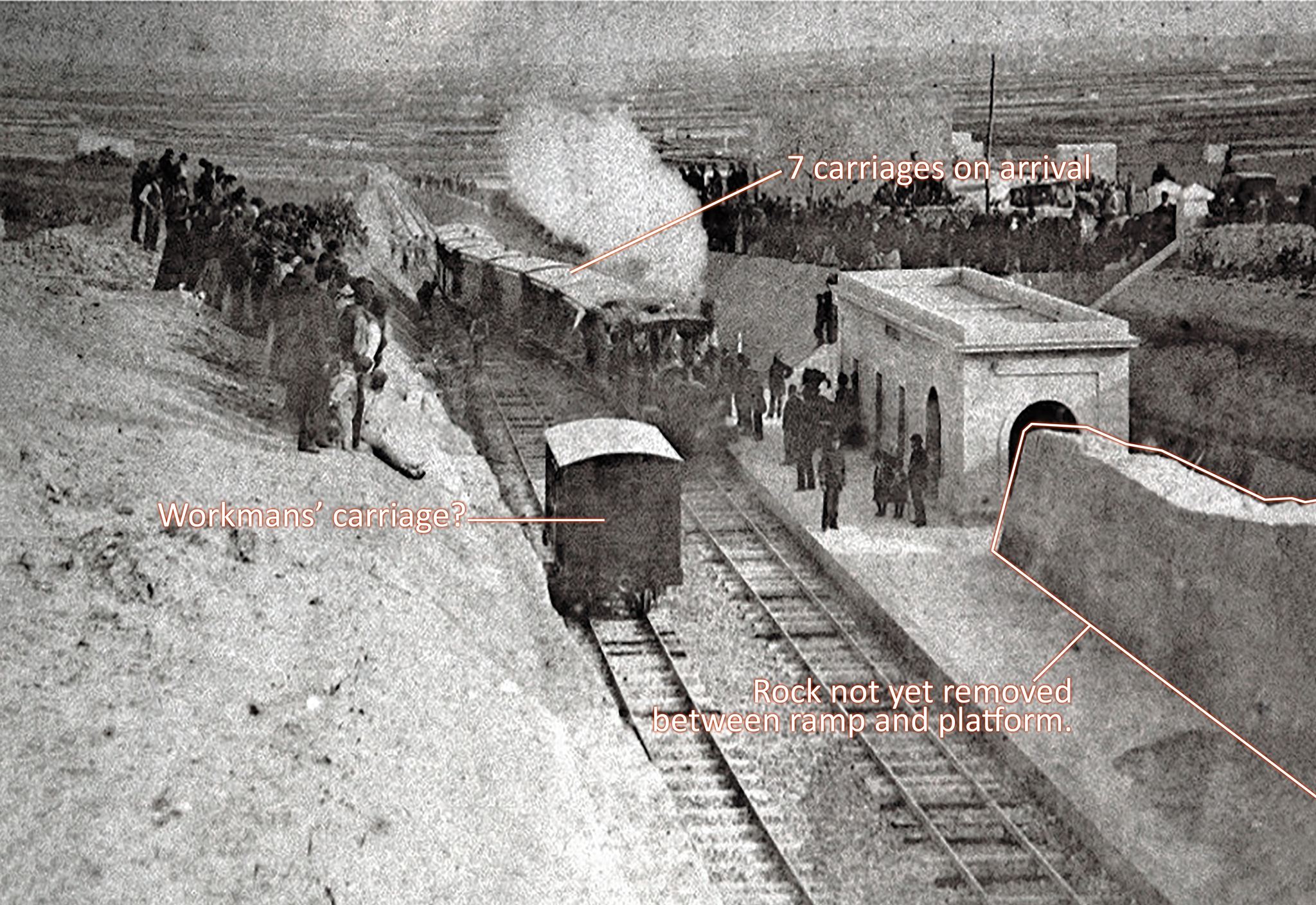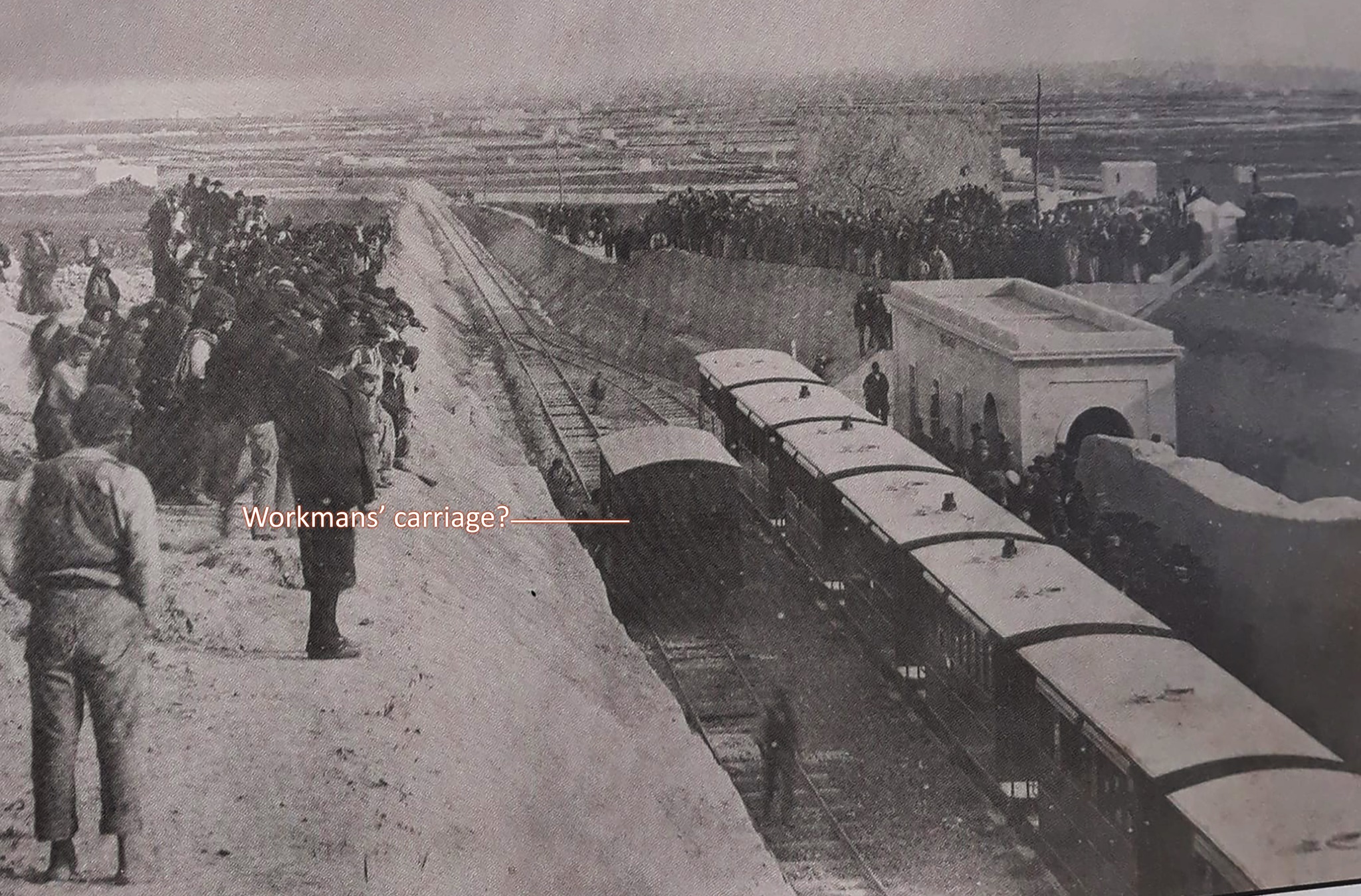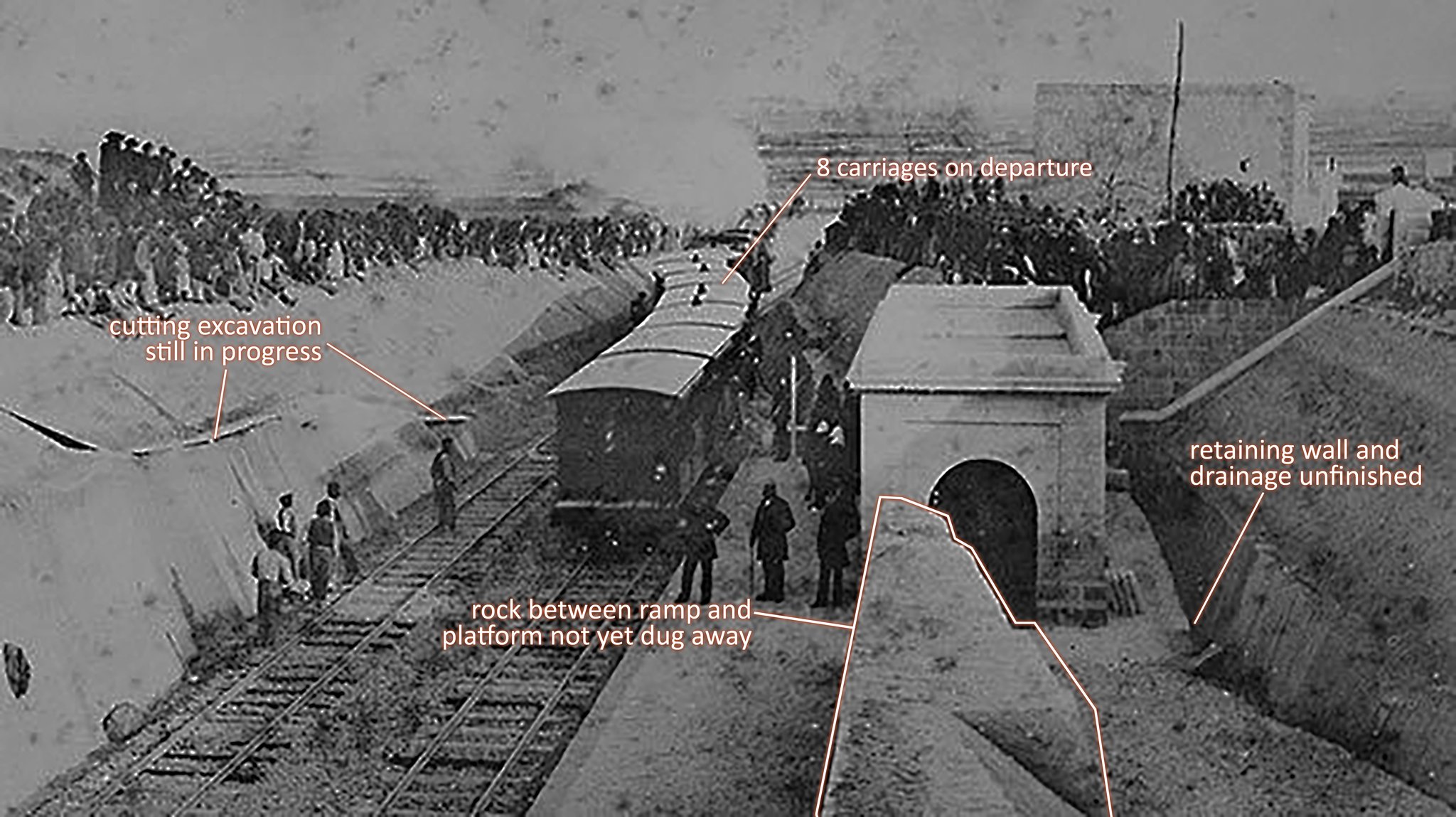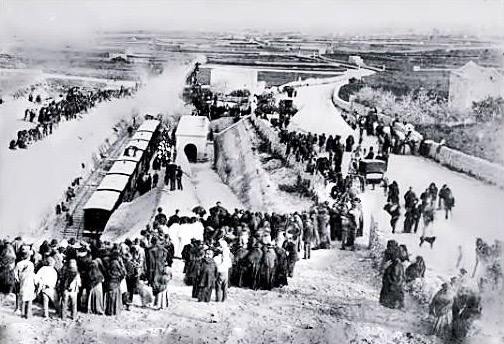There are a number of photos of the 1883 opening of the Malta Railway taken on March 1st at Notabile station. It’s interesting to see how the event developed and also to see the extent of work still incomplete on opening day. The line had been delayed repeatedly, and the ongoing work shows how construction must have continued for several weeks, if not months, after trains began.

Several views show a large ridge of rock still standing between the platform and the ramp leading down from Racecourse Road. Behind the station building the retaining wall is still work in progress with a drain dug, but still open, along its base. On the other side of the tracks timber ramps can be seen descending down the cutting where the rock face is still not cut back the whole way.
The train arrived from Valletta hauled by two engines, seven carriages behind them. Strangely, on the passing loop a lone carriage stands, blocking the way for the engines to run around to the other end of the train for the return journey. It’s difficult to tell, but without a veranda or attached vents on the sides it looks like it’s one of the open workmen’s carriages.

The location of the carriage on the loop would require it to be moved by hand, physically manhandled onto the Valletta end of the train to allow the locomotives to pass and couple up. The train back to Valletta is shown to have run with eight carriages, the oil lamps on the roof helping to confirm the workman’s carriage was added on the far end from the photographer.
So, why was the carriage added, and why was a lowly workers vehicle apparently used rather than another carriage? Rather than “battleship grey” recorded as the livery used for workman’s carriages this one looks to be dark painted like the train. Was that just for the opening, or an unrecorded early livery?



No responses yet